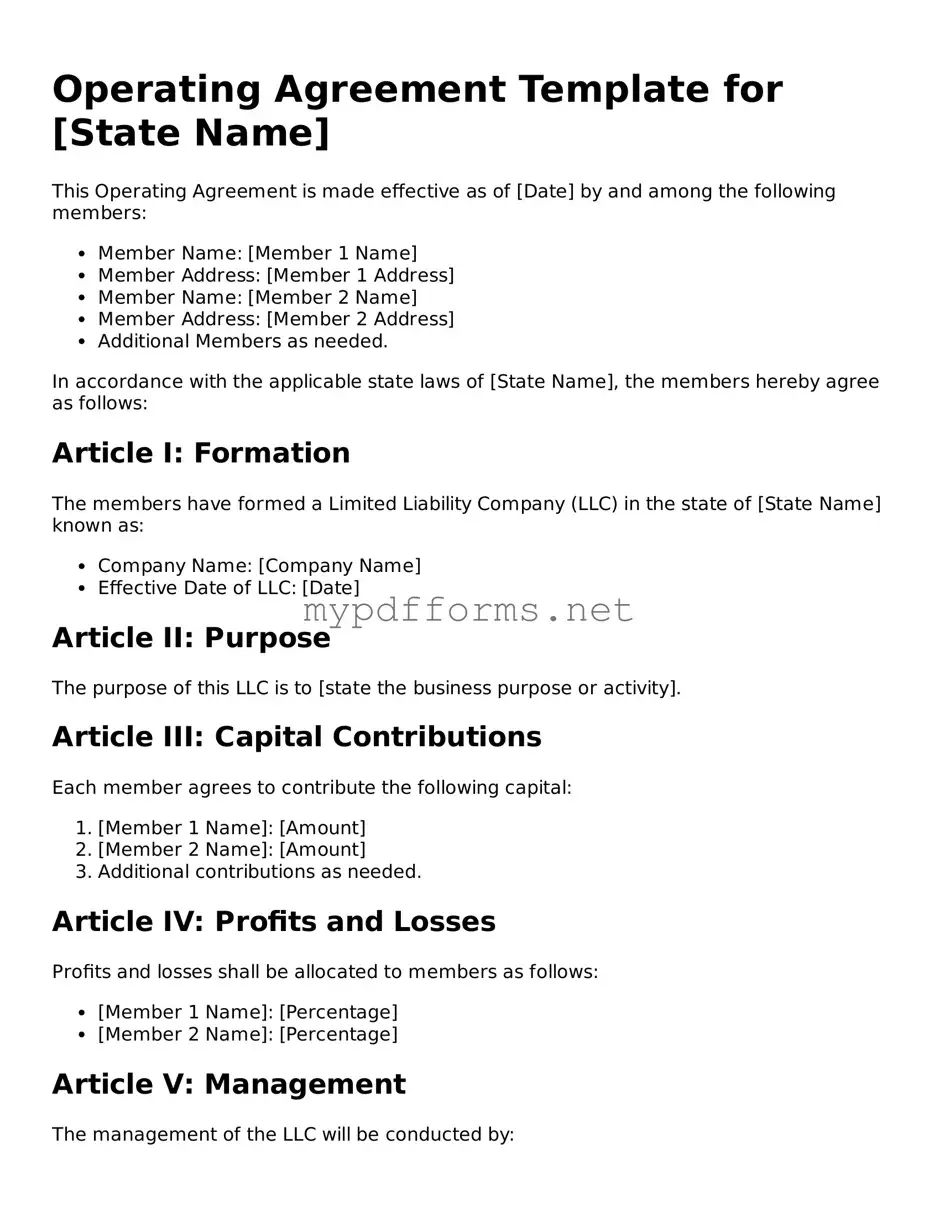The Operating Agreement is similar to a Partnership Agreement. Both documents outline the roles, responsibilities, and rights of the parties involved in a business. A Partnership Agreement specifically addresses how profits and losses will be shared among partners, while an Operating Agreement does the same for members of a limited liability company (LLC). In essence, both documents serve to clarify the internal workings of a business entity, ensuring that all parties are on the same page regarding their contributions and expectations.
Another document akin to the Operating Agreement is the Bylaws of a corporation. Bylaws govern the internal management of a corporation, detailing how decisions are made, how meetings are conducted, and the roles of officers and directors. Like an Operating Agreement, Bylaws are essential for establishing clear guidelines for governance, helping to prevent misunderstandings among stakeholders.
While discussing important documents related to ownership and governance, it's essential to consider other legal forms, such as the Dog Bill of Sale form, which serves as a crucial aspect in the transfer of dog ownership. This form provides necessary details and protections for both buyers and sellers in California, much like the agreements and documents used in business transactions that define relationships and responsibilities.
A Shareholders’ Agreement also shares similarities with an Operating Agreement. This document is used in corporations and outlines the rights and obligations of shareholders. It typically covers issues such as the transfer of shares, voting rights, and what happens in the event of a shareholder’s death or departure. Both documents aim to protect the interests of the parties involved and ensure smooth operations within the entity.
The LLC Membership Certificate is another related document. While it primarily serves as proof of ownership in an LLC, it often accompanies the Operating Agreement. The Membership Certificate may reference the rights and responsibilities outlined in the Operating Agreement, reinforcing the connection between ownership and governance in the business.
A Joint Venture Agreement is similar in that it outlines the terms of collaboration between two or more parties for a specific project. Like an Operating Agreement, it specifies the contributions, roles, and profit-sharing arrangements of each party. Both documents are crucial for setting expectations and minimizing disputes, ensuring that all parties understand their commitments.
In addition, a Franchise Agreement bears resemblance to an Operating Agreement. This document details the relationship between a franchisor and a franchisee, outlining the rights and obligations of both parties. While it focuses on franchising, it shares the same goal as an Operating Agreement: to provide a clear framework for how the business will operate and how profits will be shared.
Lastly, a Non-Disclosure Agreement (NDA) can be compared to an Operating Agreement in terms of protecting sensitive information. While an NDA focuses on confidentiality, both documents establish important guidelines that govern relationships. They ensure that all parties understand their obligations, whether it’s about operational procedures in an Operating Agreement or safeguarding proprietary information in an NDA.
